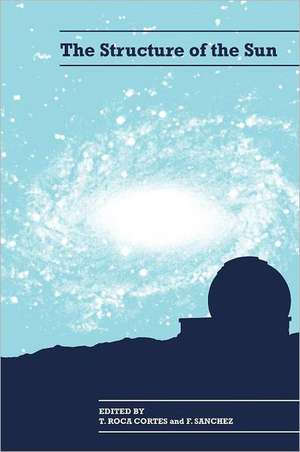The Structure of the Sun
Editat de T. Roca Cortes, Francisco Sanchezen Limba Engleză Hardback – 27 aug 1996
Preț: 678.86 lei
Preț vechi: 762.76 lei
-11% Nou
Puncte Express: 1018
Preț estimativ în valută:
129.90€ • 138.91$ • 108.31£
129.90€ • 138.91$ • 108.31£
Carte tipărită la comandă
Livrare economică 18 aprilie-02 mai
Preluare comenzi: 021 569.72.76
Specificații
ISBN-13: 9780521563079
ISBN-10: 0521563070
Pagini: 424
Ilustrații: 30 b/w illus. 1 map 7 tables
Dimensiuni: 178 x 254 x 24 mm
Greutate: 1 kg
Ediția:New.
Editura: Cambridge University Press
Colecția Cambridge University Press
Locul publicării:Cambridge, United Kingdom
ISBN-10: 0521563070
Pagini: 424
Ilustrații: 30 b/w illus. 1 map 7 tables
Dimensiuni: 178 x 254 x 24 mm
Greutate: 1 kg
Ediția:New.
Editura: Cambridge University Press
Colecția Cambridge University Press
Locul publicării:Cambridge, United Kingdom
Cuprins
List of participants; Group photo; Preface; 1. Techniques for observing solar oscillations Timothy Brown; 2. Testing a solar model: the forward problem Jorgen Christensen-Dalsgaard; 3. Testing solar models: the inverse problem Douglas Gough; 4. Global changes in the sun Jeffrey Kuhn; 5. Solar interior and solar neutrinos John Bahcall; 6. The solar magnetic field Eugene Parker; 7. Activity in the solar atmosphere as observed by YOHKOH Yutaka Uchida.
Descriere
A 1996 review of how the interior of the Sun can be studied using the powerful techniques of helioseismology and neutrino astronomy.









